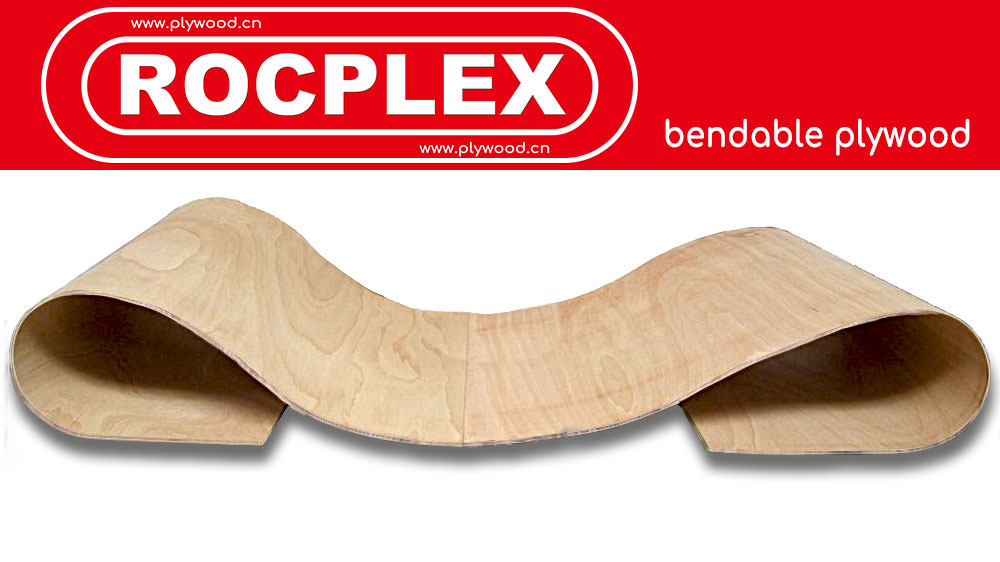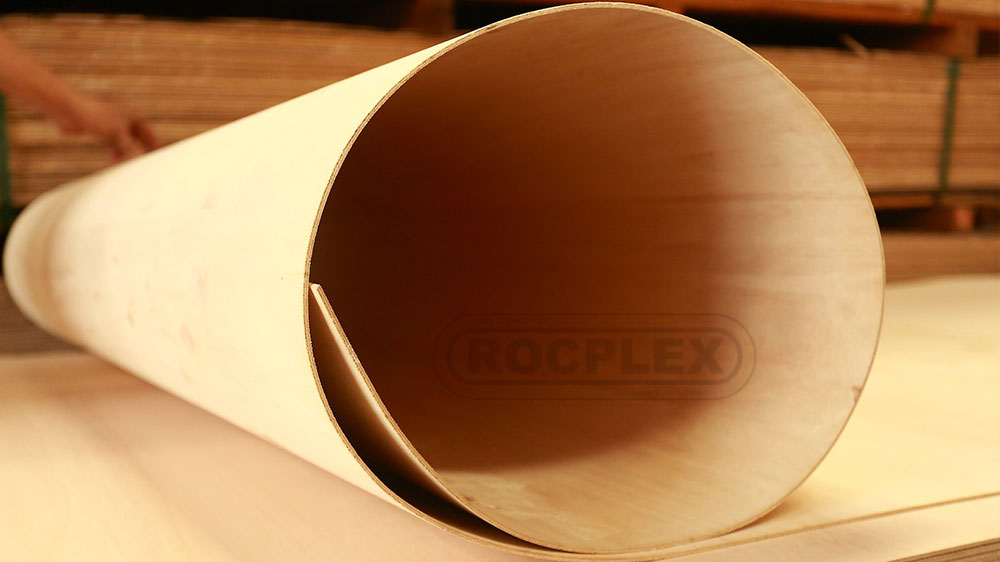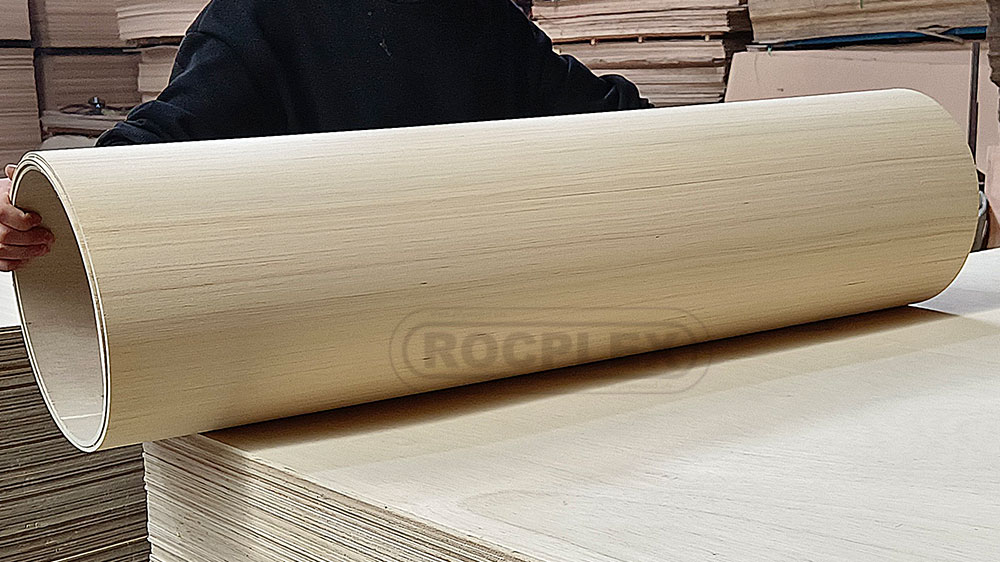What is Flexible Plywood?
Flexible plywood, a remarkable material in the construction and design world, stands out for its ability to bend without cracking. Unlike traditional rigid plywood, this innovative product, often referred to as bendy or bending plywood, offers unparalleled flexibility. Made by layering thin veneers of wood and bonding them under heat and pressure, it maintains the strength and durability of plywood while adding the element of flexibility. This characteristic makes it an ideal choice for various applications, especially in areas where curves or rounded designs are desired.
The Evolution of Flexible Plywood
The development of flexible plywood marked a significant advancement in building materials. Traditionally, creating curved structures was both time-consuming and expensive, often requiring skilled craftsmanship. With the advent of flexible plywood, designers and builders could now achieve complex shapes and contours more easily and cost-effectively. This innovation opened new avenues in architectural design, furniture making, and interior decoration.
Applications and Advantages
Versatility in Design
One of the most notable benefits of flexible plywood is its versatility. This material can be used in a range of applications, from curved architectural features to bespoke furniture pieces. It allows architects and designers to push the boundaries of creativity, bringing to life forms that were previously difficult or impossible to achieve with standard plywood.
Durability and Strength
Despite its flexibility, bending plywood does not compromise on strength. It retains the robustness and longevity associated with traditional plywood, making it suitable for both interior and exterior applications. This dual nature of being both pliable and sturdy makes it a preferred choice in various construction scenarios.
Eco-Friendly and Sustainable
In today’s environmentally conscious world, the sustainability of building materials is a vital consideration. Bendy plywood is often made from fast-growing and renewable wood species, making it an eco-friendlier option compared to some traditional construction materials. Additionally, the manufacturing process of bendy plywood is designed to be more energy-efficient and produce less waste, further contributing to its environmental appeal.
Cost-Effective Solution
The ease of use and reduced labor costs associated with flexible plywood make it a cost-effective solution for many projects. Its ability to be easily cut and shaped reduces the need for specialized tools or skills, lowering overall project costs. This aspect is particularly beneficial for custom designs and unique architectural features, where traditional methods would be significantly more expensive.
Aesthetic Appeal
Flexible plywood adds an aesthetic dimension to projects, offering a natural wood finish that can be further enhanced with stains, paints, or varnishes. This flexibility in finishing options allows for a wide range of design possibilities, catering to diverse tastes and styles.
Innovative Uses in Modern Architecture and Design
The use of flexible plywood in modern architecture and design has been nothing short of transformative. It has enabled architects to create fluid, organic shapes in their structures, bringing a new level of artistry to buildings. Interior designers have also embraced this material for its ability to create curved furniture and fixtures, adding a touch of elegance and uniqueness to spaces.
Case Studies: Real-World Examples
Several notable projects around the world showcase the innovative use of flexible plywood. For instance, [specific project name], a renowned architectural marvel, features intricate curved structures made possible by the use of bendy plywood. Similarly, [another project name] highlights how flexible plywood can be used in furniture design, creating stunning and ergonomic pieces that stand out for their creativity and functionality.
The Future of Flexible Plywood
Looking ahead, the potential of flexible plywood in the construction and design industry is vast. With continuous advancements in manufacturing techniques and a growing focus on sustainable materials, its role is expected to expand even further. This material is not just a current trend but a staple in the future of design and construction, offering endless possibilities for innovation and creativity.
Challenges and Solutions in Working with Flexible Plywood
Despite its many advantages, working with flexible plywood does present certain challenges. Understanding these and the solutions to overcome them is crucial for professionals in the field.
Handling and Installation Challenges
The very property that makes flexible plywood unique – its ability to bend – can also pose challenges during handling and installation. Without proper techniques, there is a risk of snapping or damaging the wood.
Solutions:
- Proper Storage: To maintain its integrity, flexible plywood should be stored flat and supported across its length to prevent warping.
- Skilled Handling: Specialized training for workers handling bendy plywood can significantly reduce the risk of damage during installation.
- Use of Appropriate Tools: Employing tools specifically designed for cutting and shaping flexible plywood can ensure precise and safe handling.
Moisture Resistance
While flexible plywood is durable, its resistance to moisture can be a concern, especially in outdoor applications or in humid environments.
Solutions:
- Protective Coatings: Applying waterproof coatings can enhance the moisture resistance of flexible plywood, making it more suitable for various environments.
- Design Considerations: Incorporating design elements that reduce direct exposure to moisture can extend the lifespan of flexible plywood installations.
Customization and Complexity
Creating complex shapes with flexible plywood can be challenging, requiring detailed planning and precision.
Solutions:
- Advanced Design Software: Utilizing computer-aided design (CAD) software helps in precise planning and visualization of complex designs.
- Collaboration with Experts: Working closely with architects and designers who have experience with flexible plywood can lead to more successful outcomes.
Technical Advancements in Flexible Plywood Manufacturing
The manufacturing of flexible plywood has seen significant advancements, further enhancing its quality and applications.
Improved Bonding Techniques
Modern bonding techniques have made flexible plywood more durable and resistant to delamination. These advancements also contribute to the material’s overall strength and flexibility.
Eco-Friendly Manufacturing Processes
There has been a concerted effort to make the production of bendy plywood more environmentally sustainable. This includes using adhesives with lower volatile organic compound (VOC) emissions and sourcing wood from certified sustainable forests.
Thinner Veneers for Enhanced Flexibility
The use of thinner veneers in the construction of flexible plywood allows for greater flexibility, making it possible to achieve tighter bends and more intricate designs.
Exploring the Aesthetic Versatility of Flexible Plywood Flexible plywood is not just a structural marvel but also a canvas for aesthetic expression. Its ability to blend with various styles and designs makes it a favorite among designers and architects.
Natural Wood Finish
The natural wood finish of bendy plywood can be a design feature in itself, lending a warm and organic feel to any space. It can be left in its natural state or finished with stains or paints to match any design palette.
Integration with Other Materials
Flexible plywood pairs well with other materials like metal, glass, or stone, offering endless possibilities for innovative design combinations. This compatibility allows for the creation of unique and visually striking interiors and exteriors.
Flexible Plywood in Sustainable Design As the world increasingly moves towards sustainable practices, flexible plywood stands out for its eco-friendly credentials.
Renewable Resource
Being made from wood, a renewable resource, bendble plywood aligns well with sustainable building practices. The choice of wood species and sourcing methods further enhance its environmental appeal.
Energy Efficiency in Production
Advancements in manufacturing have made the production of flexible plywood more energy-efficient, thereby reducing its carbon footprint.
Contribution to Green Building Certifications
Using flexible plywood in construction projects can contribute to achieving green building certifications, such as LEED (Leadership in Energy and Environmental Design), which recognize sustainable building practices.
Global Market Trends for Flexible Plywood
The demand for flexible plywood is on the rise globally, driven by its unique properties and applications.
Growth in Construction and Furniture Industries
The construction and furniture industries, in particular, have seen an increased use of bending plywood, driven by the demand for innovative design solutions and sustainable materials.
Regional Variations in Usage
Different regions have adopted flexible plywood in various ways, influenced by local architectural styles, climate considerations, and material availability. This global perspective showcases the versatility and adaptability of the material across diverse contexts.
Future Outlook
The market for flexible plywood is expected to continue growing, with innovations in manufacturing and design further expanding its applications. As awareness of its benefits spreads, it is poised to become an even more integral part of the construction and design landscapes.
Educational and Inspirational Impact of Flexible Plywood
Flexible plywood is not only a practical material; it also serves as an educational and inspirational tool in the realms of architecture and design. Its properties challenge traditional building norms and encourage a rethinking of what is possible in construction and design.
Educational Value in Architecture and Design Schools
In educational settings, flexible plywood is used as a material to teach students about innovative construction techniques and sustainable design practices. Its use in academic projects inspires a new generation of architects and designers to think creatively and embrace sustainable materials.
Inspirational Role in Art and Design
The artistic possibilities of bendy plywood have been explored in various art installations and design exhibitions. These showcases highlight the material’s versatility and potential to transform spaces in visually stunning ways.
Cultural and Social Implications of Flexible Plywood Usage The use of flexible plywood also has broader cultural and social implications. It reflects a shift towards more environmentally conscious building practices and a growing appreciation for innovative and sustainable design.
Reflection of Environmental Consciousness
The growing popularity of flexible plywood is indicative of a larger trend towards eco-friendly and sustainable materials in construction. This shift mirrors a societal move towards greater environmental responsibility.
Enabling Access to Innovative Design
Flexible plywood democratizes access to innovative design. Its cost-effectiveness and ease of use allow more people to incorporate unique design elements into their homes or projects, previously limited to high-end designs.
Advancements in Flexible Plywood for Specialized Applications Research and development in the field of flexible plywood continue to open up new possibilities for specialized applications.
Fire-Resistant and Water-Resistant Varieties
Emerging varieties of flexible plywood are being developed with enhanced fire-resistant and water-resistant properties, making them suitable for a wider range of applications, including in more challenging environments.
Customized Flexibility for Specific Needs
Efforts are also being made to tailor the flexibility of the plywood to specific requirements, allowing for its use in more specialized and intricate design scenarios.
Flexible Plywood – New Horizons in Construction The journey through the world of flexible plywood reveals a material that is not only transforming the realms of construction and design but also inspiring a shift towards more sustainable and innovative building practices. From educational institutions to global market trends, the impact of flexible plywood is widespread, signaling its crucial role in the future of construction and design.
FAQs About Flexible plywood
Which plywood is most flexible?
Flexible plywood, specifically designed for bending, is the most flexible type. It’s crafted with thinner veneers for enhanced pliability.
How is flexible plywood made?
Flexible plywood is made by layering thin veneers of wood and bonding them under heat and pressure, allowing the plywood to bend without cracking.
What is flexible plywood called?
Flexible plywood is also known as bendy plywood or bending plywood.
How is Flexi ply different from traditional plywood?
Flexi ply is designed for flexibility, enabling it to bend, unlike traditional plywood, which is rigid.
What is the thickness of flexible plywood?
Flexible plywood comes in various thicknesses, typically ranging from 3mm to 6mm, depending on the application.
Is 6mm plywood flexible?
Yes, 6mm plywood can be flexible, especially if it is specifically designed as flexible or bendy plywood.
Post time: Feb-18-2024



